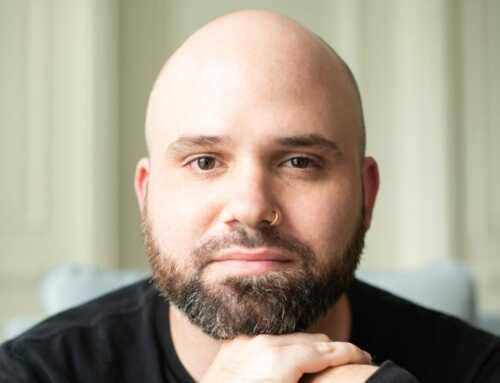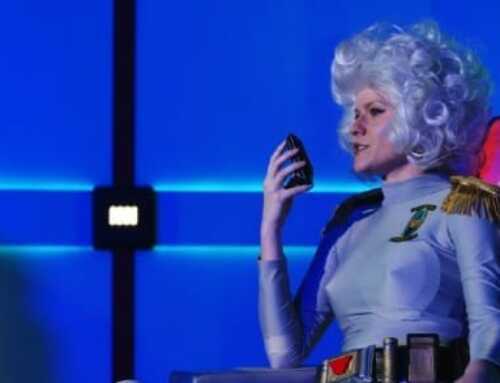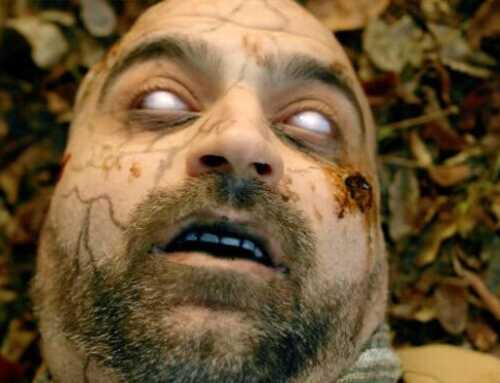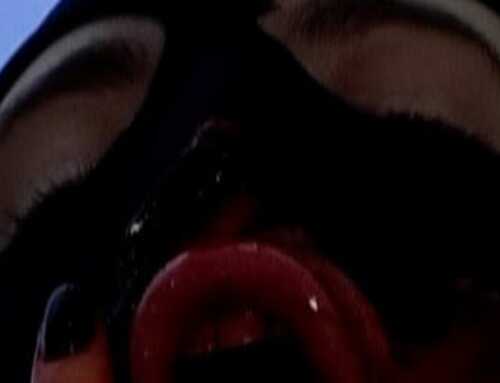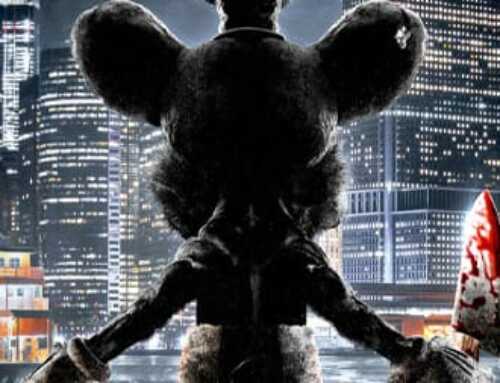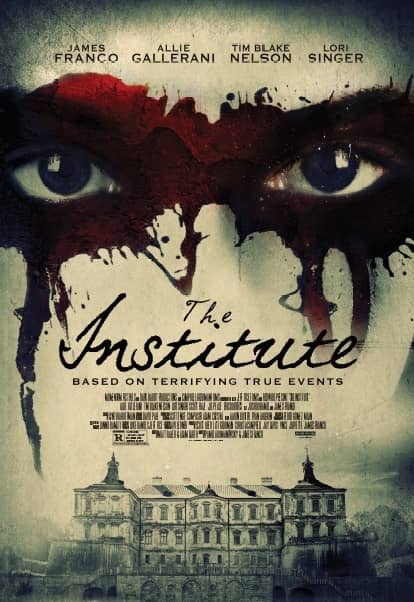 Produced and co-directed by James Franco, The Institute is helmed by Pamela Romanowsky and tells the story of Ann Williams, a 19th century Baltimore girl stricken with grief from her parents’ untimely death. She voluntarily checks herself into the Rosewood Institute in order to recover from her grief and crippling sadness. Soon after signing on the dotted line and being left by her only living relative at the sanitarium, An is subjected to bizarre and increasingly violent pseudo-scientific experiments in personality modification, brainwashing and mind control. The film is based on real events and the real location of the Rosewood Institute in Baltimore, Maryland.
Produced and co-directed by James Franco, The Institute is helmed by Pamela Romanowsky and tells the story of Ann Williams, a 19th century Baltimore girl stricken with grief from her parents’ untimely death. She voluntarily checks herself into the Rosewood Institute in order to recover from her grief and crippling sadness. Soon after signing on the dotted line and being left by her only living relative at the sanitarium, An is subjected to bizarre and increasingly violent pseudo-scientific experiments in personality modification, brainwashing and mind control. The film is based on real events and the real location of the Rosewood Institute in Baltimore, Maryland.
The site of lurid human trafficking, the real Rosewood story served as a starting point for a creepy period piece set in an experimental sanitarium. At Rosewood, Ann checks in for rest and becomes an unwitting victim, and ultimately a hero, for the suffering. It is fitting that this movie of female empowerment is helmed by a female.
We had a chance to speak with Romanowsky about her new film being released tomorrow in theaters and on VOD.
HB: The film had a great look, a very rich feel. Where did the inspiration for the film come from.
Pamela Romanowsky: Well, James (Franco) was the one that conceived the story with the writers. It’s based on a true story which is surprising given that it is a dark movie. The Rosewood asylum was a real place, built in 1888, and it was one until 2009. Although the scandal that inspired the film happened in the 40’s. There was this visiting psychiatrist that was working at Rosewood who outed them at this big conference, saying that they were running, essentially, a human trafficking scheme. They were selling their patients to their benefactors.
HB: Oh MAN!
PR: Yeah, it’s not like a Fargo situation where it isn’t really true, no, that was true. The other pieces of this story are the victorian horror stories that are involved. A lot of the key scenes are based on scenes from Edgar Allen Poe and Nathaniel Hawtorn stories. SO that was a way to add a mother interesting element into the film while exploring the theories on psychology at the time. That was a weird time especially for women. Women would enroll in these places a lot like today women enroll in a wellness retreat or a yoga retreat. They would go there for nerves or anxiety,, depression. People would enroll but some of the procedures were really dark and it would change them forever. The kind of therapy that James character is doing, Dr. Cairn, is based on enacting characters in stories as a sort of drama therapy. Cairn takes it too faro though in trying to convince his patients that they ARE the characters that they are playing.
HB: It was a very dark time for mental health, with patients thinking they were going to something like a day spa?
PR: Yeah, wealthy women would treat them like luxury spas. There were these wellness retreats that would also incorporate psychiatry, so like there were breathing treatments and skin treatments built around a natural element like a hot spring or sulphur clay.
HB: What was the feature in Maryland?
PR: You know, I am nor sure why that one was just outside Baltimore.
HB: The whole idea of an institute taking advantage of its patients and treating them in terrifying ways is something that always comes up in horror because it’s such a rich place to build from. What compelled you to tell this particular story?
PR: Well the kind of horror films that I love are all psychology based. I’m not particularly scared by supernatural things but I think people can be scary. I love theo horror movies about people that use their power and influence to do terrible things. The inspiration for this film was based on things that I loved like The Shining, Misery, Rosemary’s Baby. I was a Psych major so there is always something that interesting me in a clinical way as well as a cinematic way, especially how you represent what a character is experiencing. So for me the overt psychology theme was interesting as well.
HB: Yeah there were some nice, long scenes that played with your perception and what you thought was happening. But, in the end things end on a mysterious note.
PR: Yeah it’s a bit ambiguous as to whether or not that ends happily.
HB: How did you get involved with the project? James Franco co-directed. How did that work?
PR: Yes, so James came to me with this project and had done a lot of the prep work, had chosen a lot of the cast, had done the rewrites, and while we were on set he was also directing another film as well. I helped execute the film. While he was on set acting he was contributing with direction and on days that he wasnt there it was just myself and the production. It was kind of a fluid experiment but he is also a close friend of mine. I know him very well, we share a lot of the same references and tastes so it was easy to develop the world and the visual style. It was really interesting, I loved working with him.
HB: How long have you known James?
PR: Uh, going on ten years, we met in grad school.
HB: So after all that time, what was it that you learned about him in regards to the press of filmmaking and what did you learn about yourself?
PR: I learn so much on every film. One thing I love is working with actor/directors, and you know, James is one. Actors see other actors doing their work, but as a director you don’t really get to see other directors. There is so much about the process that is so mysterious. So, when we worked this way it was fascinating to see how another director would approach something. I think directing is about understanding so many other processes. Every time I work with a new production designer, a new costume designer, a new editor, you learn so much about new ways of thinking. I think that the need t be so adaptable is a part of the reason why I love the job. Getting to watch James work as an actor and a director is interesting, but working with him as a director is also just as interesting. I think it is kind of a contact learning experience.
HB: There is always something to learn and always something fresh.
PR: Yes.
HB: How long was the shoot?
PR: This shoot was extremely fast. We shot, The script at the time was 120 pages because it was originally supposed to be a TV pilot. That’s why it ends the way it does and there are characters introduced along the way that seem to disappear. We knew that we weren’t going to be able to shoot the series but we still wanted to make a films that was satisfying in its own way but would leave the door open should we want to do anything more with it.
At the time we shot it, the script was 120 pages. We shot it in two weeks, a 14 day shoot. We were always shooting 5pm to 5 am, sometimes a little longer if we needed daylight scenes.
HB: Did you shoot on location?
PR: Yes, we had to shoot everything in one location because of the speed of the shoot. You couldn’t have 9 to ten scenes in one day and have a company move. We had to find one location that had everything we needed, only having to do micro-moves or micro-builds. So often we would have to use the same room for four sets by moving a door over here or change the window there. It was a very interesting way to work that made us flexible and creative and sort of think outside the box.
The building itself was beautiful and architecturally right, but it was n the middle of Downtown LA. Anytime we were outside we had to be very selective on what we were seeing and what we were hiding.
HB: Downtown LA.
PR: Well we did one night in the woods.
HB: Where is the building.
PR: It’s on 3rd and Loma. And the building is very atmospheric. It was built as a YWCA in the 1890’s and now it’s sort of an adult dorm, like a halfway house. So there were people living there while we were shooting. People would just walk by in their flip flops while we were shooting.
HB: LOL!
PR: Yeah we would be in our victorian clothes and our cult robes and people would just be going about their lives.
HB: What do you have going on after this?
PR: I’m working on a bunch of different things. The thing I am most excited about, I just got back from South Africa, I am shooting a short film for Refinery 29, that will come out end of April. I had never been to South Africa and it was great to spend some time there. One of the main characters is a leopard, played by, well, a leopard.
HB: That’s somebody that takes method acting too far.
PR: Yes.
HB: Was that horror?
PR: No, it’s a drama, it was a little short film, entirely in Zulu. That was another thing, I had never shot a film in a language that I do not speak. Kind of a magical realist tone about a 13 year old girl that is being bullied and finds an unlikely ally in the scary leopard that is terrorizing the village she lives in.
HB: Another pro-female theme. Very mystical. Awesome.
The Institute will be released tomorrow in select theaters and VOD.
| The Institute | ||
| RATING: | R | The Institute Trailer #1 (2017) James Franco Thriller Movie HD |
| Runtime: | 1hr. 30Mins. | |
| Directed By: | ||
| Written By: | ||


